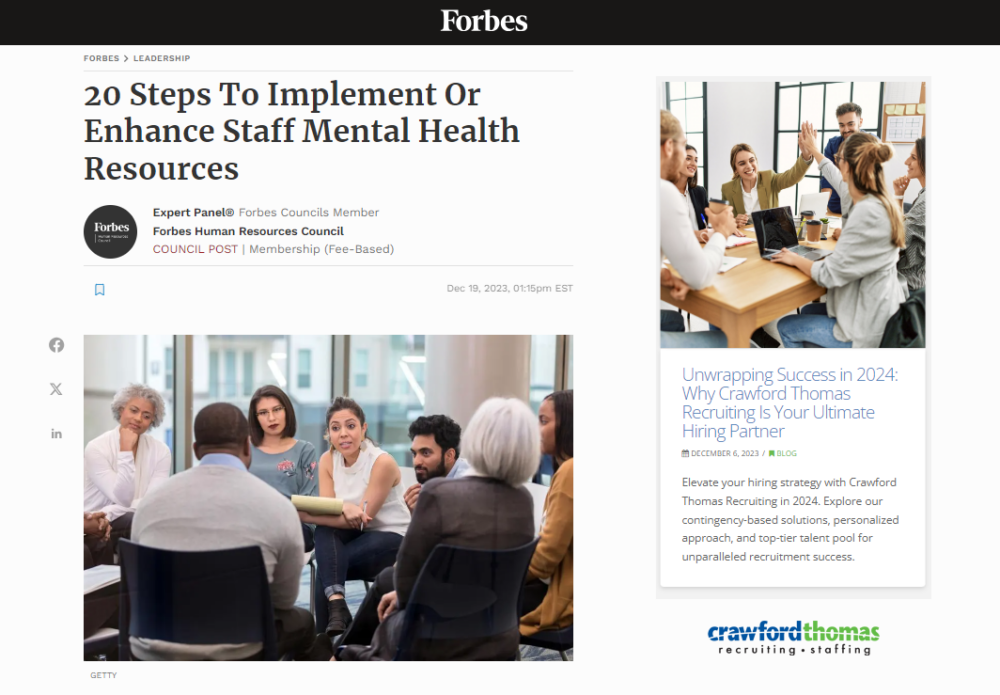In a recent collaborative article titled “20 Steps To Implement Or Enhance Staff Mental Health Resources,” William Stonehouse III, President of Crawford Thomas Recruiting, joined other esteemed members of the Forbes Human Resources Council to share insights on prioritizing mental health resources in the modern workplace.

The leaders emphasized the significance of executive commitment in fostering a workplace culture that promotes mental health and well-being. William Stonehouse highlighted the implementation of an Employee Assistance Program (EAP) with telemedicine access at Crawford Thomas Recruiting, emphasizing its role not just as a perk but as a commitment to the overall health of the team.
The article stressed the importance of leaders leading by example, openly discussing their own mental health needs to encourage a culture of openness and support. Strategies such as normalizing benefits, effective communication of available resources, and promoting well-being policies, including flexible paid time off and required days off, were highlighted to create a supportive atmosphere and work-life balance.
Cultural integration emerged as a key theme, with leaders emphasizing the need to incorporate mental health into the organizational culture by promoting mindfulness, meditation, and critical thinking. Open and honest conversations about mental health were encouraged to eliminate workplace stigma, fostering a culture where employees feel understood and supported.
The leaders also advocated for practical initiatives, such as providing well-being apps, organizing mental health awareness days, and bringing in experts to guide employees in understanding and addressing their mental health needs. Continuous communication, regular check-ins with employees, and employee feedback mechanisms were highlighted as essential components to keep mental health at the forefront of organizational priorities.
William Stonehouse and the Forbes HR Council members collectively underscored the multifaceted approach required to enhance mental health resources, recognizing it as a critical aspect not only for individual well-being but also for the overall resilience, engagement, and productivity of the workforce.

